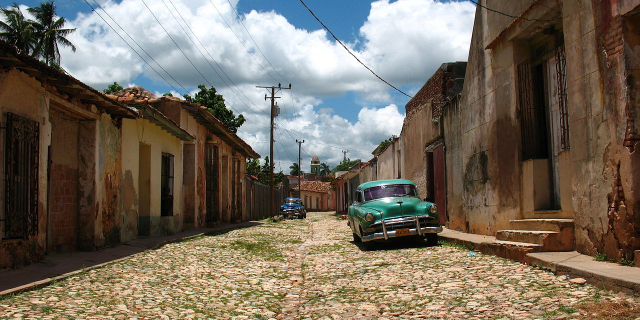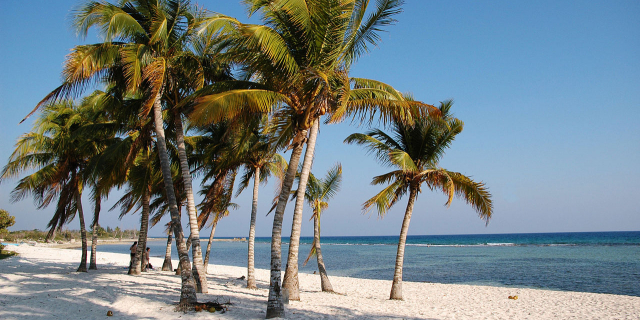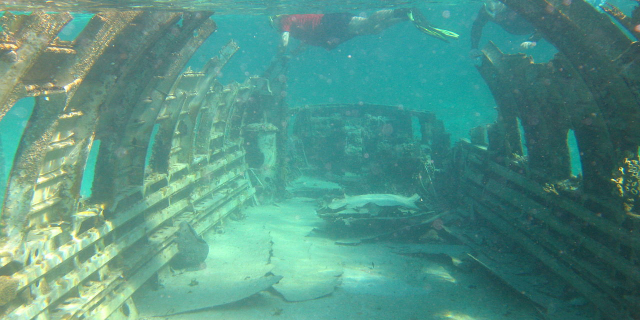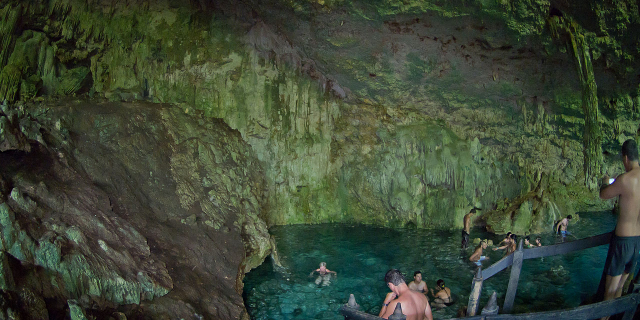Camagüey (Spanish pronunciation: [kamaˈ(ɣ)wej]) is a city and municipality in central Cuba and is the nation's third-largest city with more than 333,000 inhabitants. It is the capital of the Camagüey Province.
It was founded as Santa María del Puerto del Príncipe in 1514, by Spanish colonists on the northern coast and moved inland in 1528, to the site of a Taino village named Camagüey. It was one of the seven original settlements (villas) founded in Cuba by the Spanish. After Henry Morgan burned the city in the 17th century, it was redesigned like a maze so attackers would find it hard to move around inside the city.
The symbol of the city of Camagüey is the clay pot or tinajón, used to capture rain water and keep it fresh. Camagüey is also the birthplace of Ignacio Agramonte (1841), an important figure of the Ten Years' War against Spain. A monument by Italian sculptor Salvatore Buemi, erected...Read more
Camagüey (Spanish pronunciation: [kamaˈ(ɣ)wej]) is a city and municipality in central Cuba and is the nation's third-largest city with more than 333,000 inhabitants. It is the capital of the Camagüey Province.
It was founded as Santa María del Puerto del Príncipe in 1514, by Spanish colonists on the northern coast and moved inland in 1528, to the site of a Taino village named Camagüey. It was one of the seven original settlements (villas) founded in Cuba by the Spanish. After Henry Morgan burned the city in the 17th century, it was redesigned like a maze so attackers would find it hard to move around inside the city.
The symbol of the city of Camagüey is the clay pot or tinajón, used to capture rain water and keep it fresh. Camagüey is also the birthplace of Ignacio Agramonte (1841), an important figure of the Ten Years' War against Spain. A monument by Italian sculptor Salvatore Buemi, erected in the center of the area to Ignacio Agramonte, was unveiled by his wife in 1912. It is composed of an equestrian statue, reliefs in bronze that reveal fragments of the life of Agramonte, and a sculpture of a woman that symbolizes the motherland.
In July 2008, the old town was designated a UNESCO World Heritage Site, because of its irregular, maze-like city planning, its prominent role in early Spanish colonization and agriculture, and its rich architecture showing a variety of influences.
Camagüey was founded as Santa María del Puerto del Príncipe in 2 February of 1514, by Spanish colonists led by Diego Velázquez de Cuéllar at a location now known as Nuevitas on the northern coast. It was one of the seven original settlements (villas) founded in Cuba by the Spanish. The settlement was moved inland in 1528 to the site of a Taíno village named Camagüey.
The new city was built with a confusing lay-out of winding alleys. There are many blind alleys and forked streets that lead to squares of different sizes. One explanation is that this was done by design, to make the city easier to defend from any raiders; by the same version, the reason that there is only one exit from the city was that should pirates ever return and succeed in entering the city, it would be possible for local inhabitants to entrap and kill them. However, locals dispute this reasoning as a myth, asserting that in truth the city developed without planning, and that winding streets developed out of everybody wanting to stay close to their local church (the city has 15 of them).
During the eighteenth century the city was called Santa María del Puerto del Príncipe; between 1747 and 1753 Luis de Unzaga y Amézaga, then captain governor of Puerto del Príncipe, rehabilitated the city, which had been badly damaged during the War of Jenkins' Ear, and Unzaga also rebuilt the Church of La Merced.[1]
 Church of Nuestra Señora de la Soledad, Camagüey, in the late 19th-century.
Church of Nuestra Señora de la Soledad, Camagüey, in the late 19th-century.Upon Cuba's independence from Spain, in 1898, was when the city and its surrounding province received the current name of Camagüey, as a result of the independence from Spain. The indigenous name was already before used to refer to the region "El Camagüey" in reference to the local chief ('cacique') Camagüebax, who ruled between the Tínima and Hatibonico rivers, and was approved on that date for the province that had been created in 1878, the province in this same year was a militar region by the republic in arms.






























Add new comment